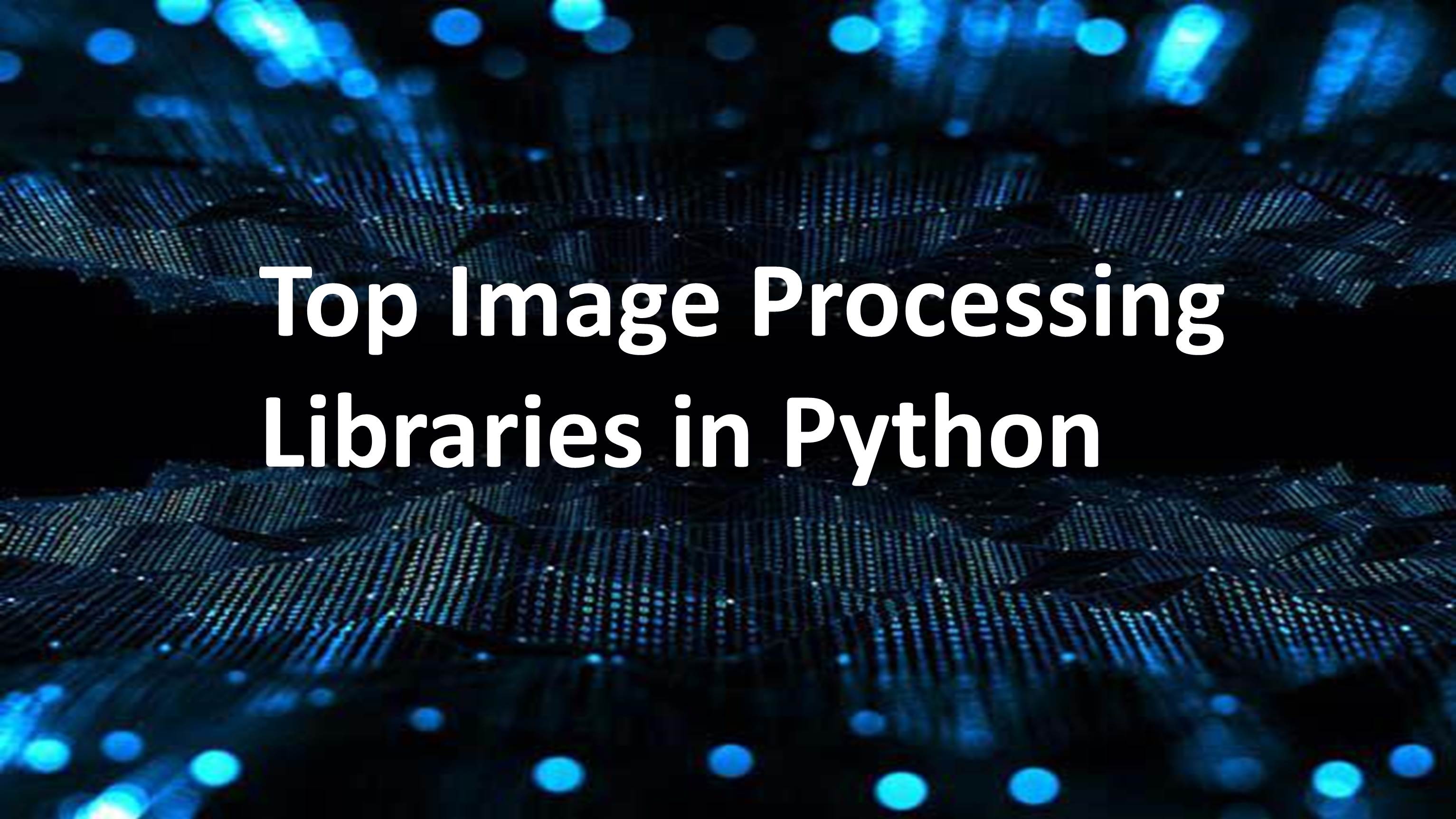Introduction
As indicated by IDC, digital information will soar up to 175 zettabytes, and the immense piece of this information pictures. Data scientists need to (pre) measure these images before taking care of them into any Artificial Intelligence and deep learning models. They need to do the significant (and at times filthy) work before the pleasant part starts.
To handle a lot of information with effectiveness and speed without bargaining the outcomes Data scientists need to utilize picture preparing instruments for Artificial Intelligence and deep learning tasks.
In this article, I will drill down the most helpful image processing libraries in Python which are being utilized vigorously in Artificial intelligence and deep learning tasks. So let’s get started!

Table of Contents
- OpenCV
- Scikit-Image
- Scipy
- Python Image Library (Pillow/PIL)
- Matplotlib
- SimpleITK
- Numpy
- Mahotas
OpenCV
OpenCV is one of the most famous and widely used open-source libraries for computer vision tasks such as image processing, object detection, face detection, image segmentation, face recognition, and many more. Other than this, it can also be used for machine learning tasks. This is developed by Intel in 2002. It is written in C++ but developers have provided Python and Java bindings. It is easy to read and use.
To build computer vision and machine learning models, OpenCV has more than 2500+ algorithms. These algorithms are very much useful to perform various tasks such as face recognition, object detection, and many more. Let’s see some examples where we can perform using OpenCV:
Gray Scaling
Below code, snippet shows the gray-scaling in OpenCV
Rotate Image
Check the below code to rotate the image by 180 degrees.
import cv2 as cv
import matplotlib.pyplot as plt
img = cv.imread('example.jpg')
h, w = image.shape[:2]
rot_matrix = cv.getRotationMatrix2D((w/2,h/2), -180, 0.5)
rot_image = cv.warpAffine(img, rot_matrix, (w, h))
plt.imshow(cv.cvtColor(rot_image, cv.COLOR_BGR2RGB))
For more information, check official documentation: Link
Scikit-Image
Check the below code for active contour operation:
import numpy as np
import matplotlib.pyplot as plt
from skimage.color import rgb2gray
from skimage import data
from skimage.filters import gaussian
from skimage.segmentation import active_contour
image = data.astronaut()
# Data for circular boundary
s = np.linspace(0, 2*np.pi, 400)
x = 220 + 100*np.cos(s)
y = 100 + 100*np.sin(s)
init = np.array([x, y]).T
# formation of the active contour
centre = active_contour(gaussian(image, 3),init, alpha=0.015, beta=10, gamma=0.001)
figure, axis = plt.subplots(1, 2, figsize=(7, 7))
ax[0].imshow(image, cmap=plt.cm.gray)
ax[0].set_title("Original Image")
ax[1].imshow(image, cmap=plt.cm.gray)
For more information, check official documentation: Link
SciPy
SciPy is primarily used for mathematical and scientific computations, but sometimes it can also be used for basic image manipulation and processing tasks using the submodule scipy.ndimage.At the end of the day, images are just multidimensional arrays, SciPy provides a set of functions that are used to operate n-dimensional Numpy operations. SciPy provides some basic image processing operations such as Face Detection, Convolution, Image Segmentation, Reading Images, Feature Extraction, and many more. Along with this, you also perform filtering, draw contour lines on images.
Check the below code for Blurring an image with SciPy:
from scipy import ndimage, misc from matplotlib import pyplot as plt f = misc.face() b_face = ndimage.gaussian_filter(f, sigma=3) figure, axis = plt.subplots(1, 2, figsize=(16, 8))
For more information, check official documentation: Link
Python Image Library (PIL/Pillow)
Change the sharpness of an image:
For more information, check official documentation: Link
Matplotlib
Matplotlib is primarily used for 2D visualizations such as scatter plots, bar graphs, histograms, and many more, but we can also use it for image processing. It is effective to get information out of an image. It doesn’t support all file formats.
Check the below image after background color change operation:
For more information, check official documentation: Link
SimpleITK
It is also called Insight Segmentation and Registration Toolkit. It is an open-source library that is used for Image Registration and Image Segmentation. Libraries like OpenCV consider the image as an array but this library considers images as a set of points on a region in space. Check the below example:
Image Segmentation
For more information, check official documentation: Link
Numpy
Check the below image to extract green/red/blue channels from the image:
For more information, check official documentation: Link
Mahotas
Check the below image for Template Matching using Mahotas:
For more information, check official documentation: Link
Conclusion
So in this article, we have covered the top 8 image processing libraries in python for machine learning in 2021. I hope you learn something from this blog and it will turn out best for your project. Thanks for reading and your patience. Good luck!
You can check my articles here: Articles
Thanks for reading this article on python libraries for image processing and for your patience. Do let me in the comment section. Share this article, it will give me the motivation to write more blogs for the data science community.
Email id: gakshay1210@gmail.com
Follow me on LinkedIn: LinkedIn
The media shown in this article are not owned by Analytics Vidhya and is used at the Author’s discretion.






